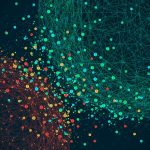What is your background and current role?
Prior to co-founding Healx and my role as chief executive (CEO) of the firm, I completed a PhD in biophysics at the University of Cambridge. I was passionate about the use of machine learning for treatment development. Together with my co-founder, Dr David Brown, the inventor of Viagra and ex-global head of drug discovery at Roche, we founded Healx in 2014. Our mission is to use AI to find treatments for rare diseases at scale.
What does your day-to-day work involve?
As a CEO I juggle between medium- to long-term strategic planning and the day-to-day operations of the organisation. However, there is no set template to follow. No one day is the same!
When we started, people questioned whether machine learning could help find rare disease treatments at scale. To our own surprise, for every rare disease worked on to date, we’ve always identified successful preclinical candidates, which translated into a 100% success rate so far.
In the not so distant future, it will be normal to apply machine learning in the pharma and healthcare industry. I feel that my key role is to make sure Healx is always at least one step ahead of the pack.
What is a key frustration of your job?
Both the hype and scepticism around AI in our space. Some people are grossly over-promising, others too sceptic and protective of the past. In my view, AI is an extremely powerful tool that will do wonderful things for human health. We have to embrace it. However, it is not a replacement for deep drug discovery expertise and disease knowledge. It is a powerful tool to support the experts in developing a more effective drug discovery process and to do things at a larger scale and lower cost-basis.
Being a CEO of a fast-growing start-up means being able to adapt and change work habits very quickly. I love talking to my team, listening to their opinions and being actively involved in their day-to-day challenges. However, as we grow, I have to focus my time more on long-term strategy. This means increasingly delegating ongoing matters to the management team. Not having enough time to talk to my team is quite frustrating at times.
Why the interest in rare diseases?
I have always been passionate about helping rare disease sufferers, but my desire to use AI and machine learning technology to accelerate treatments for rare diseases was ignited following a meeting with a parent of children with a rare disease, Nick Sireau. At the time, he was relentlessly trying to repurpose a weedkiller to save his children from an ultra-rare disease. Upon meeting Nick, alongside fellow Healx co-founder Dr David Brown, we realised how big the therapeutic unmet need was and have since made it our mission to help rare disease patients access life-saving treatments.
Presently, there are over 7,000 rare diseases affecting 350 million people worldwide, and 95% of these still lack an approved treatment. Due to the limitations of the traditional drug discovery model, big pharma often prioritises profit-making ‘blockbuster’ drugs for common diseases over finding breakthrough treatments for rare diseases.
Rare disease patients have long been sidelined by the pharmaceutical industry who struggle to justify investment in treatments for smaller populations.
How does Healx’s approach to discovering potential new therapies for rare diseases differ from the traditional R&D model?
It differs hugely. At Healx we have developed Healnet, the most comprehensive AI platform currently out there for the prediction of rare disease treatments. Unlike the traditional R&D model which takes an average of 12 years and costs over $1 billion to bring a treatment to patients, Healx’s model can bring new medicines to patients in four to five years and at a fraction of the cost.
Alongside our technology, we are also committed to keeping a patient-centric focus. Our commitment to keeping patients at the very heart of what we do, sees us collaborating with a number of patient groups to understand the most urgent challenges patients and their carers face. This is an approach that we feel not only marks us out from our competitors but which, ultimately, helps us do a better job of improving the quality of life of those living with rare diseases.
What are the objectives of Healnet and how does it work?
Our aim is to translate 100 rare disease treatments towards the clinic by 2025. Healnet uses machine learning to mine data from scientific literature, patents, clinical trials, disease symptoms, drug targets and underlying chemical structures. From this unique knowledge graph of rare disease data, it then maps more than a billion data points connecting diseases, patients and drugs. This approach allows for new connections to be made between related diseases (in terms of biology, the symptoms and drugs that may be effective on them) which then enables Healnet to predict potential treatments. As a by-product of this process, we often uncover new biological mechanisms as well.
Alongside the complex algorithms, our drug discovery experts ensure treatment predictions are made in the most responsible way possible. Then, our team of pharmacologists reviews all treatment predictions before selecting the most relevant ones for further testing.
Do you think artificial intelligence is the future for medicines R&D?
Looking at the history of the R&D of medicines, there have been two transformative phases: phenotype-based in the early 20th century and target-based discovery in the 1990s. We are now on the cusp of the 3rd transformation: data-driven and hypothesis-free discovery. By hypothesis free, we mean an unbiased approach to disease selection and treatment prediction. For example, we do not start by selecting our favourite disease, drug or target. We let the algorithms match and rank those. We subsequently select and test the most promising ones experimentally. Then work out the biology and mode of action behind it. A key aspect of our approach also takes gene expression into account, which has shown to give tremendous results.
On one hand, machine learning allows us to improve existing processes in drug discovery, which is terrific. On the other, it also allows us to innovate and define novel processes altogether. It will take time for the latter to be more widely adopted by other companies and, importantly, the regulators. However, we believe we are at the cusp of the third wave of drug discovery, paving the way to a data-driven and hypothesis-free approach.
So yes, AI and tech is certainly the future for medicine R&D, but there is still some work to do in the wider adoption and validation of these techniques.
Will there still be a place for human scientists in the lab in the future?
Yes, but it is also true that AI will reduce the number of scientists required within a biotech and pharma company.
AI enables us to automate and scale certain tasks and processes. Some of these used to keep 100 scientists busy for a year perhaps. In the future, this could potentially be achieved with 15-20 scientists. The benefits of such technology are undeniable and at the same time, it will open a host of specialisations and roles which didn’t exist before. Scientists will be empowered by AI, and we will always need people to complete the job, especially in highly regulated environments like pharmaceuticals and healthcare.
Are there any drawbacks to relying on machine learning to seek out drug candidates?
I wouldn’t call them drawbacks, but there are challenges and limitations we need to consider when seeking our drug candidates with machine learning. It is important to remember that the machine learning methods are as good as the data you feed into them. Today, lack of comprehensive and quality data is a significant barrier to unlocking the true potential of machine learning.
Also, it’s important to note that at Healx we work on integrating AI with deep pharmacology expertise. Rather than replacing the human intelligence, judgement and invaluable real-world experience, we want to empower our teams with the most amazing tools.
What are your passions outside of work?
I have a huge passion for transforming the lives of rare disease patients even outside my work, this is why I am also the co-founder and trustee of the Cambridge Rare Disease Network (CRDN), a charity aiming to foster dialogue and awareness around rare diseases in Cambridge (UK).
To recharge, I also do my best to find time for hot yoga, meditation and rock climbing. More importantly, I love to spend time with my wife and our newborn baby boy!
What keeps you awake at night?
My six-month old son!
If you could invite anyone (alive or dead) for dinner, who would it be and why?
Amma, the hugging guru (Mata Amritanandamayi). I met Amma in her ashram when I was traveling with my wife in India after my PhD. The seed for Healx actually started there. It would be great to thank her in person. She still has no idea how positively she impacted our work and mission at Healx.






